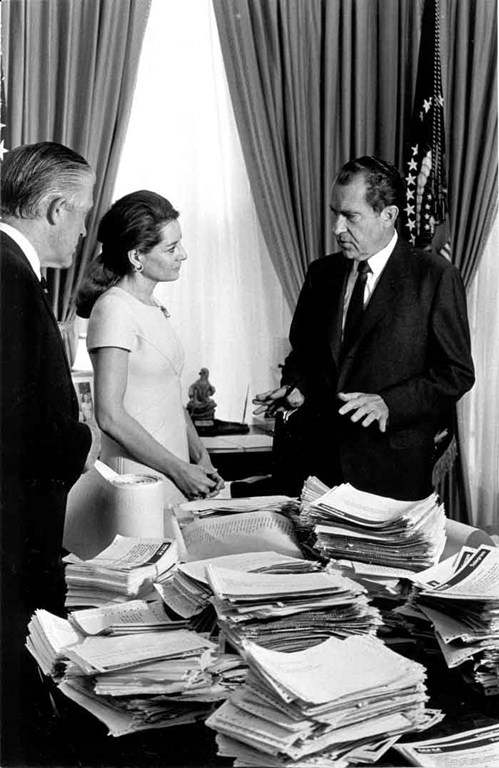Nixon’s “Silent Majority” Speech
November 3, 1969

Hoping to regain the initiative after the October Moratorium demonstrations, President Nixon gives a nationally televised speech addressing America’s “deep division about Vietnam.” He explains his plan for ending the war through Vietnamization, negotiation, and the withdrawal of American troops according to a gradual timetable. Nixon also asks the “great silent majority” of Americans to support his Vietnam policies.
The speech is the centerpiece of the administration’s coordinated response to the October 15 “Moratorium” that includes official press releases and public statements by Vice President Spiro Agnew and other administration officials. The speech and the wider public relations effort sustain majority public support for the President. Polls conducted afterward indicate that 77 percent of respondents approve of his plan to end the war. Still, a majority also feel that antiwar dissenters raise questions that should be examined.1
What historians say:
Scholars disagree over the significance of President Richard Nixon’s Silent Majority speech for the history of the Vietnam War. Some authors believe that this speech was Nixon’s most influential and successful public address: The speech comprised the moment when Nixon convinced a critical mass of the American public to support his continuation and even expansion of the war under the label “Vietnamization.” According to this policy, Nixon hoped to win an honorable peace in Vietnam while maintaining popular support at home by removing American troops, strengthening the South Vietnamese armed forces, isolating North Vietnam from its Communist allies, and periodically intervening with superior firepower to force Hanoi to accept Washington’s peace terms.
More importantly, Nixon’s words, some argue, embodied the president’s ongoing successful exploitation of the “Southern Strategy,” a geographic and sociological realignment of the Republican Party’s ideology that produced a profound and lasting change on American political culture. The “silent majority” label rhetorically divided and delineated American society into two halves: those drawn from working-class, middle America who, although exhausted with the war, remained committed to a peace agreement that would protect America’s reputation and those in the small circle of radicals who had distorted popular frustrations with the war into brazen disdain for America itself. Soldiers who fought in Vietnam frequently came from working-class backgrounds, and, although these social groups tended to support the Democratic Party and oppose the war, they also resented many antiwar activists for their perceived socioeconomic privilege and alleged public indecency. Nixon’s speech and political appeal to the “silent majority” of Americans, people who believed the radical social movements of the 1960s had gone too far, enabled him to defeat Senator George McGovern in the 1972 presidential election.
Appy, Christian G. Working-Class War: American Combat Soldiers & Vietnam. Chapel Hill: The University of North Carolina Press, 1993.
Campbell, Karlyn Kohrs. The Great Silent Majority: Nixon’s 1969 Speech on Vietnamization. College Station: Texas A&M Press, 2014.
Hess, Gary R. Vietnam: Explaining America’s Lost War. Malden, MA: Blackwell Publishing, 2009.
Perlstein, Rick. Nixonland: The Rise of a President and the Fracturing of America. New York: Scribner, 2008.